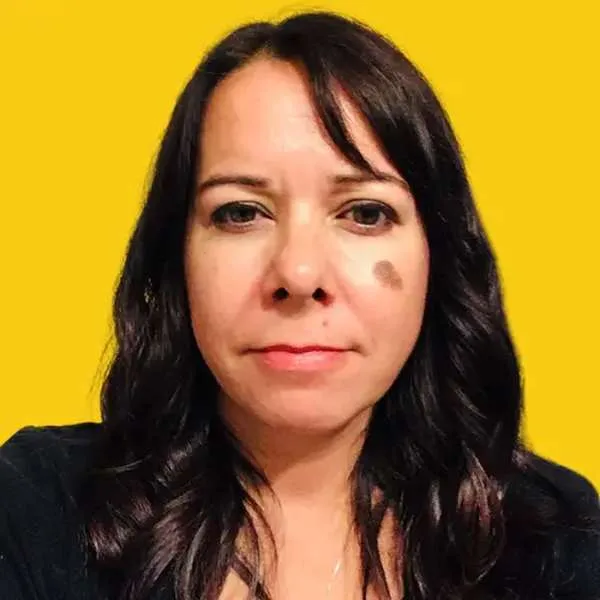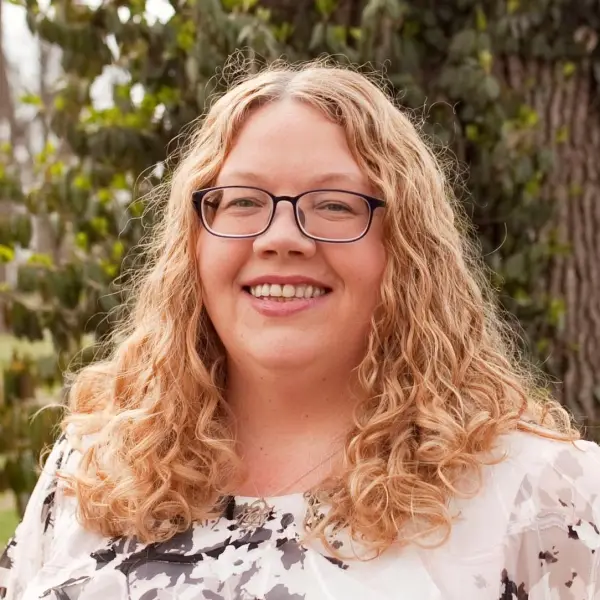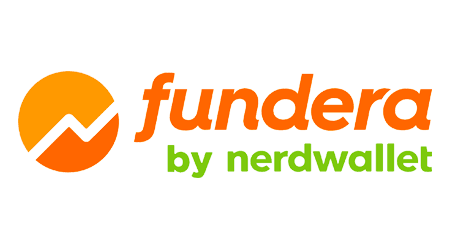If you’re looking for a faster way to secure business funding compared to traditional loans, no-doc and low-doc business loans might be the solution. These loans skip much of the usual documentation, allowing you to apply and get approved quickly — sometimes within a day.
Whether you need $50,000 to cover cash flow shortages or jump on a new business opportunity, this guide helps you navigate your options and choose the right no-doc or low-doc loan for your needs.
Compare $50,000 no-doc and low-doc business loans
Check out these no-doc and low-doc lenders. They offer various types of financing for your business — including 50K loans — without the hassle of extensive paperwork.
What is the Finder Score?
The Finder Score crunches 12+ types of business loans across 35+ lenders. It takes into account the product's interest rate, fees and features, as well as the type of loan eg investor, variable, fixed rate - this gives you a simple score out of 10.
To provide a Score, we compare like-for-like loans. So if you're comparing the best business loans for startups loans, you can see how each business loan stacks up against other business loans with the same borrower type, rate type and repayment type.
What is a no-doc business loan?
A no-document business loan (or no-doc loan) refers to financing that requires little to no documentation to qualify. Instead of piles of paperwork, no-doc lenders may only need to review your bank statements or connect to your online accounts to approve your loan. While you’ll still need to complete an application and sign a contract, you typically do these steps online.
No-doc loans are most commonly used for short-term financing and offer fast turnaround times. However, the tradeoff is often higher interest rates than other funding options, along with repayment schedules that may require daily or weekly payments.
Despite drawbacks, no-doc business loans can be a practical solution if you don’t qualify for traditional financing. These loans generally come with more lenient eligibility requirements, making them accessible to a broader range of businesses. They’re particularly useful for companies needing quick, short-term funding to cover cash flow gaps or invest in new opportunities.
Where to get a $50,000 no-doc business loan
While $50K business loans are available at most banks and credit unions, your best shot at a no- or low-doc business loan is with an online lender. Online lenders typically have a streamlined application and lending process that utilizes algorithms and other technologies to link directly to your accounts. Thanks to these processes, getting approved is often faster and easier than with traditional lenders — and requires less paperwork.
“No-doc business loans are frequently advertised online, on the radio and on television,” says Ben Johnston, COO at Kapitus. “A simple Google search will reveal many types of no-doc lenders, as well as aggregation sites that compare different lenders.”
“Before choosing a no-doc lender,” Johnston continues, “read the company’s reviews and search for information about that company online. See if they are mentioned in the press and if they disclose their management team and company history. Generally speaking, the longer a company has been in business and the more positive information available, the more sustainable and reputable they are.”
How to get a $50,000 no-doc business loan
The application process varies a bit depending on the lender you choose, but the typical steps to get a $50K no-doc business loan are:
- Define your loan purpose. Whether you need quick funding to address cash flow shortages or want to purchase a piece of equipment, defining your goal helps locate lenders that specialize in that type of financing.
- Compare lenders. Compare the interest rates, fees and loan terms of lenders that offer no-doc financing to find which one best meets your business’s needs.
- Get pre-approved. If possible, ask lenders to pre-approve your application before performing a hard credit check. Preapproval gives you a basic idea of the rate and terms you might qualify for before deciding on a lender.
- Gather your documents. Some “no-doc” loans may still require minimal documentation. Find out ahead of time if you’ll need to submit bank statements or other documents and gather them in one place so they’re ready to go.
- Apply for the loan. Complete the loan application. For most no-doc and low-doc lenders, you should be able to do this 100% online.
- Get approved and sign the loan documents. After completing the application, you should receive a loan decision by the next business day. Once you’re approved, be sure to review the terms of the loan agreement carefully before signing and sending it back.
How to qualify for a no-doc business loan
While no-doc business loans require less paperwork, lenders still have a few key criteria you’ll need to meet, such as:
- Credit score. Most no-doc business loan lenders will check both your personal and business credit scores. Some lenders may require a score of 680 or more, but there are some that consider credit scores as low as 500.
- Proof of revenue. Lenders will likely check to be sure your business brings in enough income to qualify for a $50K loan. To prove this, you may need to provide several months of bank statements or give the lender access to your business accounts.
- Time in business. While many lenders prefer businesses to have at least two years of experience, some no-doc options may be more flexible if you meet other qualifications.
- Downpayment or collateral. Depending on the loan type and your financial situation, a no-doc lender may require a downpayment or collateral to secure the loan.
How much does a $50K no-doc loan cost?
The cost of a $50,000 no-doc business loan varies depending on the lender and the loan type. For example, lenders can charge interest rates or factor rates that range anywhere from 3% to 60% or more.
Lenders that offer invoice financing or factoring may charge a factor rate instead of an interest rate. A factor rate is basically a percentage of the loan you’ll need to pay on top of the principal. For example, a factor rate of 1.2 for a $50,000 loan means you would owe a total of $60,000 ($50,000 x 1.2).
Many no- or low-doc business loans have shorter loan terms, which make them more expensive to budget. In addition, short-term financing may require a weekly or daily repayment schedule, which may not be feasible for some businesses.
No-doc loans may also come with origination or other fees. Always review the terms carefully and ask your lender about any extra charges to avoid surprises.
It’s important for borrowers to be aware that no-doc loans are usually more expensive for a reason, says Ben Johnston, COO of Kapitus. “Because these loans are issued with relatively little due diligence and often without collateral, the loss rates on no-doc business loans tend to be higher than full-doc loans. As a result, their cost is also higher.”
To find out exactly how much a $50K no-doc business loan could cost you, plug your loan amount plus your estimated repayment term and interest rate into our payment calculator.
Business loan calculator
See how much you'll pay on a $50,000 loan|
Your loan
|
|---|
| Loan amount |
|
$
|
| Loan terms (in years) |
|
|
| Interest rate |
|
%
|
Fill out the form and click on “Calculate” to see your estimated monthly payment.
or
Compare $50,000 loansBased on your loan terms
| Principal | $ |
|---|---|
| Interest | $ |
| Total Cost | $ |
5 types of $50K no-doc business loans
If you’re looking for a no- or low-doc business loan, consider these five loan types to see which meets your business needs.
1. Merchant cash advances (MCAs)
MCAs might be a good solution for companies that bring in a lot of revenue from debit and credit card sales. Merchant cash advance providers lend you a lump sum in exchange for a percentage of future credit card sales. This type of financing is usually very expensive and typically requires a weekly or daily repayment plan.
Consider this option if you:
- Have high sales volume
- Get revenue mostly from card sales
- Have short-term cash needs
Consider another option if you:
- Don’t have a lot of card sales
- Qualify for other loans
- Can’t budget for weekly payments
2. Business lines of credit
A business line of credit could be a good choice if you’re unsure how much you need and want some borrowing flexibility. Lines of credit can be drawn from as needed, usually for one to two years, and you only pay interest on what you borrow. A strong credit score is usually needed, but recent bank statements might be the only paperwork required.
Consider this option if you:
- Aren’t sure how much you need
- Want borrowing flexibility
- Have a good credit score
Consider another option if you:
- Want a fixed amount of money
- Have a one-time expense
3. Invoice factoring
Invoice factoring requires little to no documentation because it’s almost entirely dependent on the value of your invoices. It’s a type of lending where you sell your unpaid invoices to a factoring company that advances funding based on a percentage of your unpaid invoices. The factoring company collects payments on the invoices until the loan, along with any interest and fees, is fully repaid — which can be costly.
Consider this option if you:
- Have a lot of unpaid invoices
- Need a fast influx of cash
- Are sure your customers will pay
Consider another option if you:
- Don’t have many unpaid invoices
- Want to keep control of your invoices
- Have less-expensive loan choices
4. Invoice financing
Invoice financing is similar to invoice factoring in that you borrow money based on the value of your unpaid invoices. The difference is that you maintain control of your invoices and repay the loan as customers pay their bills. Because of the high rates and fees, both invoice financing and factoring should only be considered for very short-term financing.
Consider this option if you:
- Have a lot of unpaid invoices
- Need a fast influx of cash
- Don’t want to sell your invoices
Consider another option if you:
- Don’t have many unpaid invoices
- Don’t want to handle unpaid invoices
- Have longer-term needs
5. Equipment loans
When you take out an equipment loan, the asset you purchase is used as collateral for the loan. Because it’s a secured loan, it may have more competitive interest rates than other types of business financing, but there is a risk of losing the asset if you default on the loan.
Lenders might ask for a down payment and proof of sufficient revenue to repay an equipment loan but usually require minimal paperwork. Loan terms for equipment financing are typically longer than other low-doc loans, which can be easier to budget.
Consider this option if you:
- Need expensive equipment
- Have money for a downpayment
Consider another option if you:
- Don’t have equipment needs
- Can’t afford the downpayment
Bottom line
If you’re facing a cash flow shortage or need quick funding to seize a business opportunity, no-doc or low-doc loans can be a fast solution. These lenders use technology to eliminate the hassle of extensive paperwork, making it possible to qualify in minutes and receive funds within a day or two. Just be sure to do your research and compare multiple business lenders to ensure you’re getting the best deal.
Frequently asked questions
Are no-doc loans still available?
Yes, no-doc loans are still available, especially through online lenders. While less common than traditional loans, they remain a fast and flexible option for businesses that want to skip the paperwork.
Can I get a $50,000 no-doc business loan to start a business?
Maybe. Usually, no-doc business loans rely on business revenues and business credit scores as well as personal credit history to determine loan approval. However, if you have excellent personal credit, a low debt-to-income ratio (DTI) and sufficient income, you may qualify for a $50K loan to start a business.
Can I borrow more than $50K with a no-doc business loan?
Yes. Many no-doc lenders offer business loans ranging anywhere from thousands to millions of dollars. Of course, qualifying for higher-dollar loan amounts depends on your revenues, credit scores and other factors.
What credit score is needed for a 50K no-doc loan?
The credit score needed for a $50K no-doc loan varies by lender, but many look for a score of at least 500. Some lenders may prefer higher scores, but others focus more on your business’s revenue than your credit.
Are no-doc loans hard to get?
No-doc loans are generally easier to get than traditional loans because they require less paperwork and have more flexible requirements. However, keep in mind that interest rates can be high, so it’s important to weigh the costs before applying.
Can I get a $50,000 no-doc business loan with bad credit?
Maybe. If you meet other lender requirements, such as strong financials and other criteria, you may be able to get a $50,000 no-doc loan even with bad credit. In fact, many lenders, such as BusinessLoans.com and Credibly, will consider borrowers with scores as low as 500 for some loan types.
Ask a question
More guides on Finder
-
Large Business Loans Over $500K, $1M and More
Ever wonder what it takes to get a high-limit business loan? Find out which lenders go big.
-
Best Transportation and Trucking Business Loans in Florida
Compare top lenders offering loans in Florida to trucking and transportation businesses and the requirements to qualify.
-
Business loan calculator
Calculate the monthly payments and total costs of your business loan. Plus, learn how to reduce the total cost.
-
How to buy a business
Discover the essential steps and strategies for buying a business, from what business to buy to closing the deal.
-
BHG Financial Business Loans Review: Low Max Loan Amount
BHG Money is a nonbank lender that offers investment, debt consolidation, startup and healthcare-related loans to licensed professionals. Borrow up to $250K with minimal requirements.
-
How to get a $5 million business loan
Find financing to grow your business — or even buy another.
-
Compare $10,000 business loans
Stay away from big banks for a loan of this size.
-
Reliant Funding small business loans review
Though fast, it’s not up front about rates and fees.
-
How to get a business loan
What to expect during the business loan application process to cut down on time and stress.
-
Bluevine Competitors and Alternatives
Like BlueVine invoice factoring and credit lines? Check out these six alternatives.






